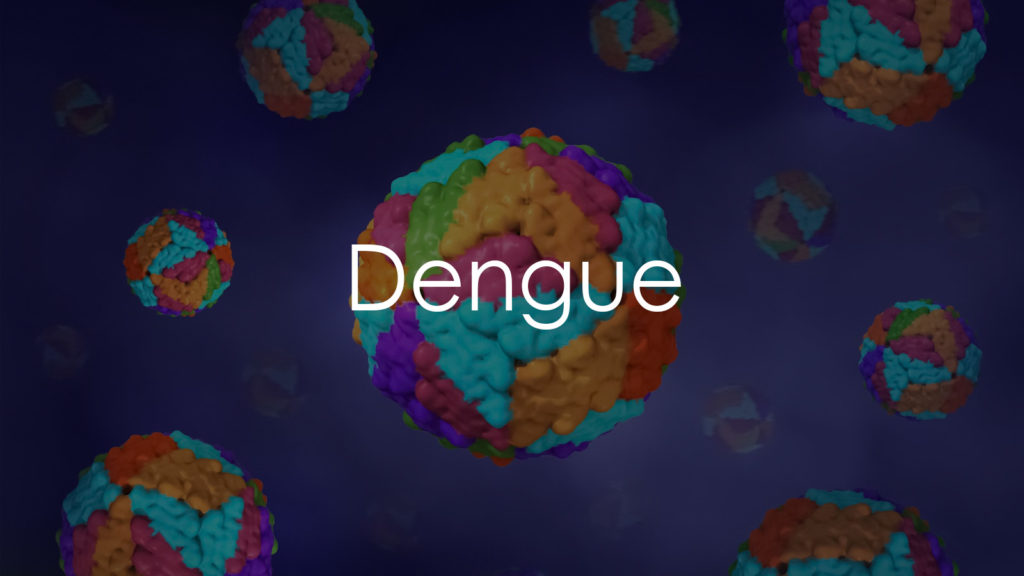Dengue fever, a mosquito-borne viral infection, is caused by the dengue virus. Understanding the causes of dengue is crucial for effective prevention and control of this potentially serious disease.

The Dengue Virus
Flavivirus Family
Virus Classification
Dengue is caused by the dengue virus, which belongs to the Flavivirus family. This family of viruses includes other significant pathogens such as Zika, West Nile, and Yellow Fever viruses.
RNA Virus
The dengue virus is an RNA virus, meaning its genetic material is ribonucleic acid. RNA viruses are typically highly infectious and can spread rapidly through populations.
Serotypes
Four Distinct Serotypes
The dengue virus has four distinct serotypes: DENV-1, DENV-2, DENV-3, and DENV-4. Infection with one serotype provides lifelong immunity to that specific serotype but not to the others.
Sequential Infections
Sequential infections with different serotypes increase the risk of severe dengue, also known as dengue hemorrhagic fever or dengue shock syndrome, due to antibody-dependent enhancement (ADE).
Transmission of Dengue
Mosquito Vectors
Aedes Aegypti
The primary vector for dengue transmission is the Aedes aegypti mosquito. This mosquito is well-adapted to urban environments and breeds in standing water.
Aedes Albopictus
Aedes albopictus, also known as the Asian tiger mosquito, is another vector capable of transmitting dengue. It is more prevalent in rural and semi-urban areas.
Mosquito Bites
Feeding Behavior
Aedes mosquitoes are day-biters, with peak feeding times in the early morning and late afternoon. They prefer to feed on humans, increasing the likelihood of virus transmission.
Virus Acquisition and Transmission
Mosquitoes acquire the dengue virus by biting an infected person. The virus then replicates in the mosquito and is transmitted to another person through subsequent bites.
Environmental Factors
Climate
Temperature and Humidity
Warm temperatures and high humidity levels are conducive to the breeding and survival of Aedes mosquitoes. These conditions are typically found in tropical and subtropical regions.
Rainfall
Heavy rainfall creates breeding sites for mosquitoes by providing standing water, which is essential for their life cycle. Increased rainfall often correlates with higher dengue transmission rates.
Urbanization
Population Density
High population density in urban areas facilitates the spread of dengue by increasing the number of human hosts available for mosquito bites.
Water Storage Practices
Inadequate water storage practices, such as storing water in open containers, provide breeding sites for Aedes mosquitoes, contributing to the spread of dengue.
Environmental Sanitation
Waste Management
Poor waste management practices, including the accumulation of discarded containers and tires, create breeding sites for mosquitoes. Proper waste disposal can reduce the number of potential breeding sites.
Drainage Systems
Clogged or poorly maintained drainage systems can lead to standing water, which serves as a breeding ground for mosquitoes. Effective drainage systems are crucial for reducing mosquito populations.
Human Factors
Human Movement
Travel and Migration
International travel and migration can introduce the dengue virus to new areas. Travelers from dengue-endemic regions can carry the virus to non-endemic areas, leading to outbreaks.
Urbanization and Population Growth
Rapid urbanization and population growth increase the risk of dengue transmission by creating environments conducive to mosquito breeding and increasing human-mosquito contact.
Socioeconomic Factors
Access to Healthcare
Limited access to healthcare and public health infrastructure can hinder the diagnosis, treatment, and control of dengue. Improving healthcare access is essential for effective disease management.
Public Awareness
Lack of public awareness about dengue prevention measures can contribute to the spread of the virus. Education campaigns are crucial for promoting behaviors that reduce mosquito breeding and prevent bites.
Biological Factors
Immunity and Serotype Interaction
Partial Immunity
Infection with one serotype of the dengue virus provides partial immunity to other serotypes. However, subsequent infections with different serotypes can lead to more severe disease due to antibody-dependent enhancement (ADE).
Antibody-Dependent Enhancement (ADE)
ADE occurs when antibodies from a previous dengue infection facilitate the entry of a different serotype into host cells, leading to increased viral replication and severe disease.
Genetic Susceptibility
Host Genetics
Genetic factors can influence an individual’s susceptibility to dengue infection and the severity of the disease. Certain genetic markers have been associated with a higher risk of severe dengue.
Viral Genetics
Genetic variations in the dengue virus can affect its virulence and transmissibility. Monitoring viral genetic changes is important for understanding and predicting outbreaks.
Preventive Measures
Vector Control
Mosquito Control Programs
Effective vector control programs focus on reducing mosquito populations through measures such as insecticide spraying, larviciding, and eliminating breeding sites.
Community Involvement
Community involvement in vector control efforts is crucial for success. Public education and participation in activities like cleaning up potential breeding sites can significantly reduce mosquito populations.
Vaccination
Dengue Vaccines
Vaccination is a key strategy for preventing dengue. The development and deployment of effective dengue vaccines can reduce the incidence and severity of the disease.
Vaccine Challenges
Developing a dengue vaccine is challenging due to the presence of four distinct serotypes and the risk of ADE. Ongoing research aims to create safe and effective vaccines for all serotypes.
Conclusion
Understanding the causes of dengue, including the role of the dengue virus, mosquito vectors, environmental factors, human behavior, and biological interactions, is essential for effective prevention and control. By addressing these causes through vector control, public education, and vaccination, the spread of dengue can be significantly reduced, protecting public health and preventing outbreaks.